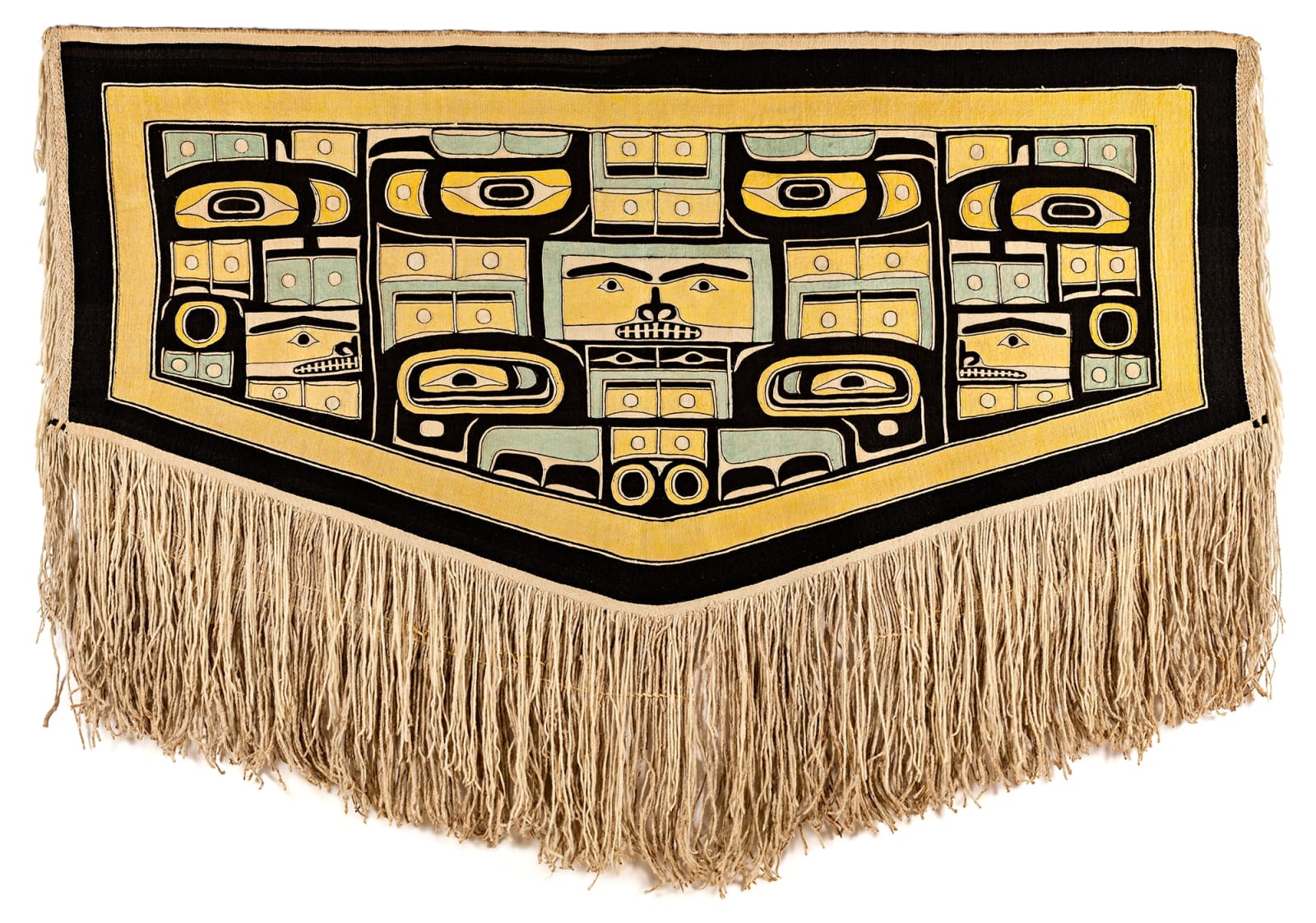UNIDENTIFIED ARTIST, TLINGIT, CHILKAT KWAAN
ESTIMATE: $40,000 — $60,000
PRICE REALIZED: $72,000.00
Further images
The classic Chilkat robe, known as Naaxein in the Tlingit language, features parallel yellow and black borders around the perimeter, with a formline design that usually fills the space within them. Sometime in the nineteenth century, the concept of a symmetrical centre panel with profile designs on the side panels was conventionalized, as can be seen in this example. In some robes, the centre panel design represents a crest being, and the side panels display profiles of the same creature. Others exhibit a less defined relationship between centre and side panels. Late in the Naaxein tradition, more configurative designs were created upon a white background. In this robe, the centre panel appears to represent a sea mammal, probably a whale, with the head on the bottom, body and pectoral fins on the sides and the wide tail spanning across the top of the field. The side panels are formline whale profiles, with the head, body and fins represented in an abstract collection of design elements connected by black formlines.
This robe is in exceptionally good condition, from the headline across the top to the tips of the warp fringe at the bottom. Colors yellow and blue-green have survived well, though the same colors on the back side show what they originally looked like prior to UV light exposure on the front. The inevitable fading has been minimal, much less than with many historical Chilkat robes. The design of the classic diving whale has been very cleanly woven, the design shapes well defined and smooth, with only small wiggles in some ovoid forms.
Steven C. Brown
References: For a robe of similar design see Stephen C. Brown, Native Visions: Evolution in Northwest Coast Art from the Eighteenth through the Twentieth Century, (Seattle Art Museum, 1998), fig. 5.25, p. 127. See Cheryl Samuel, The Chilkat Dancing Blanket, (Norman: Univ. of Oklahoma Press, 1990); see also the section on Chilkat blankets in George Thorton Emmons and Frederica de Laguna, The Tlingit Indians, (AMNH and Univ. of Washington Press, 1991) pp. 224-233.
Provenance
Collection of John and Joyce Price, Seattle.Join our mailing list
* denotes required fields
We will process the personal data you have supplied in accordance with our privacy policy (available on request). You can unsubscribe or change your preferences at any time by clicking the link in our emails.






